Bridge Plates on Martin Guitars
The bridge plate is a small, thin block of wood, usually made of mahogany, maple, or rosewood, roughly the same size as the bridge, and glued inside the top, opposing the bridge, to stiffen the top and provide a hard surface to keep the ends of the strings from wearing through the top.
Some of the earliest Viennese Style Martins with ladder bracing had rectangular maple bridge plates, while some had no bridge plates at all, even with pin style bridges.
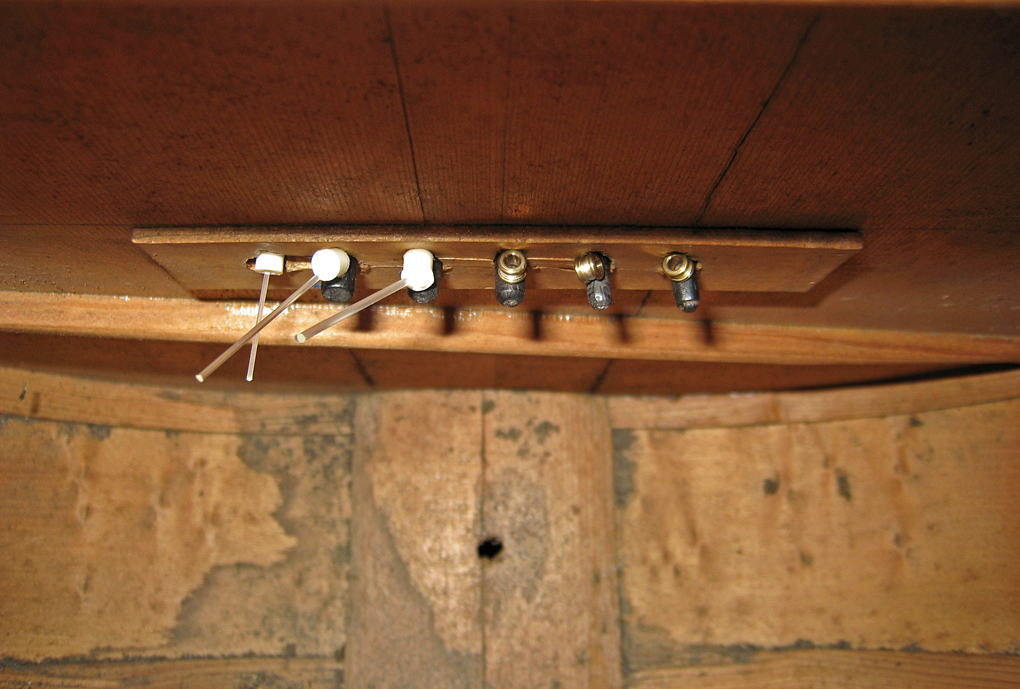
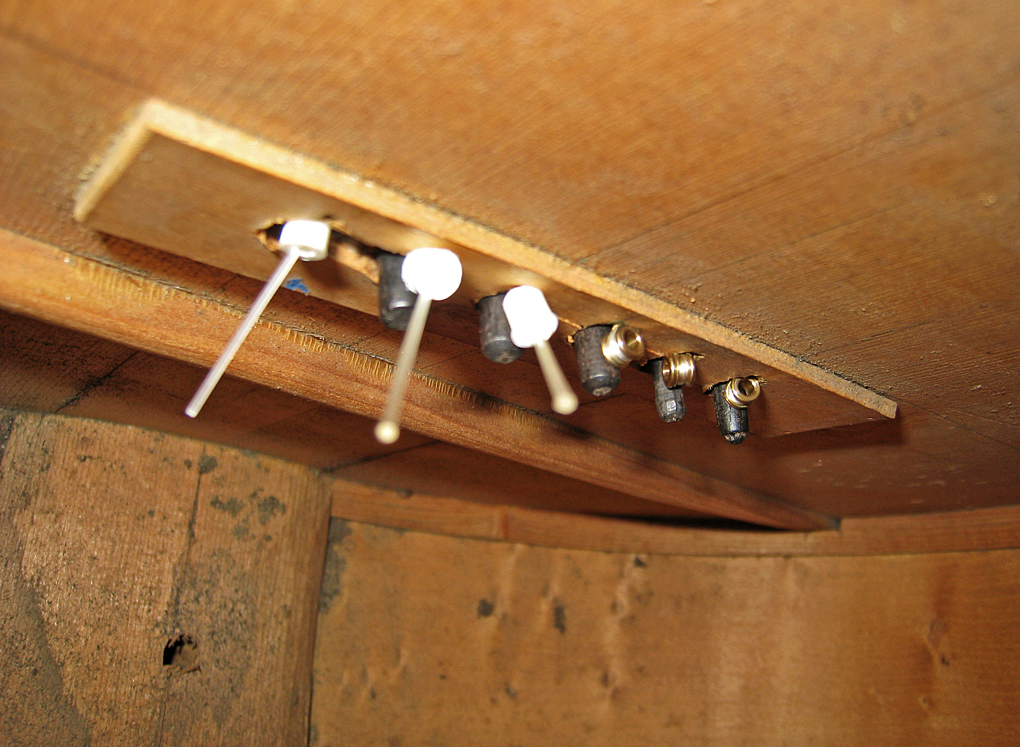
Early fan braced Martins also sometimes had rectangular maple bridge plates.
1840's Martin & Coupa Guitar
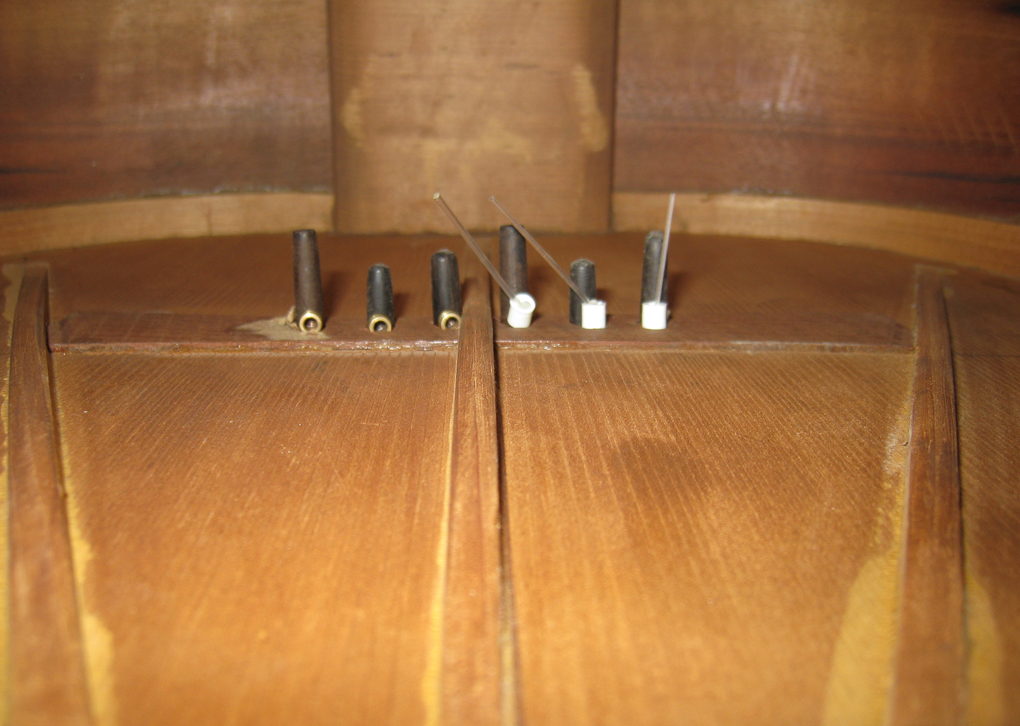
1840's "Renaissance Style" Martin
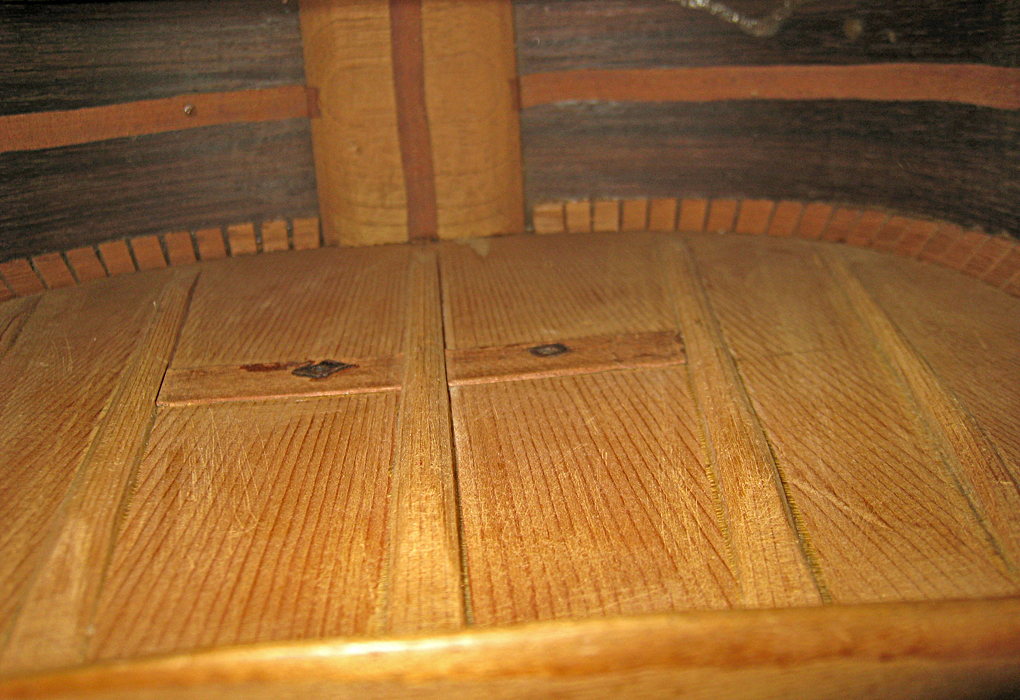
Early X braced Martins had thin mahogany bridge plates notched through the braces, with tapered ends.
Spanish Martin Style 28
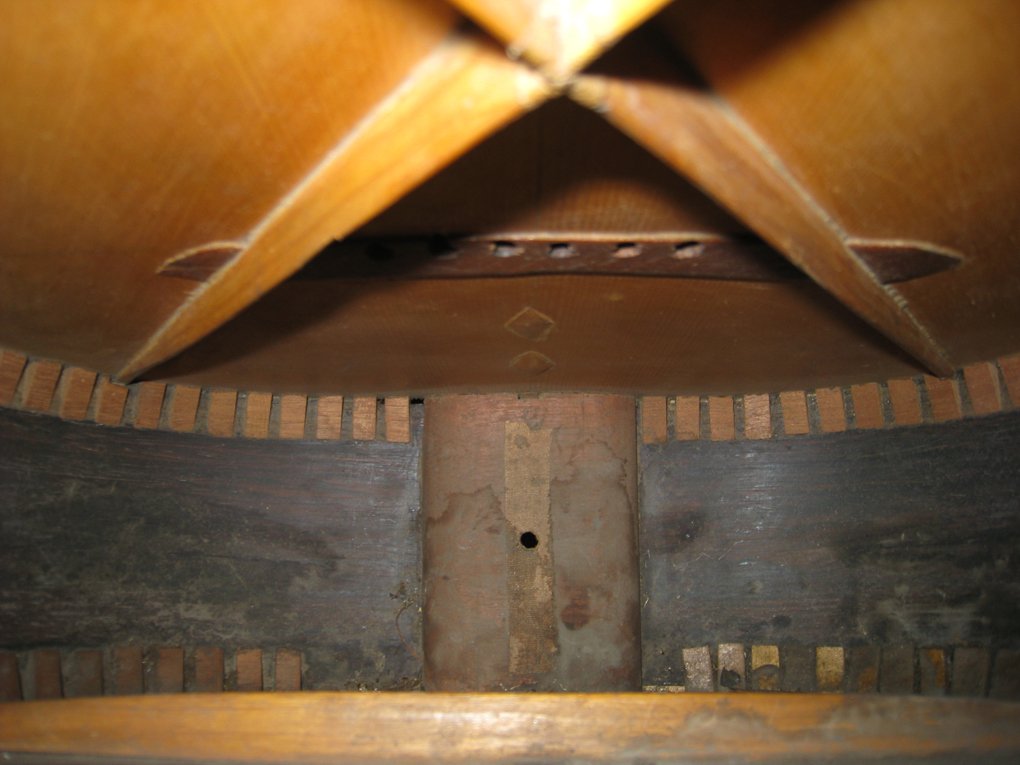
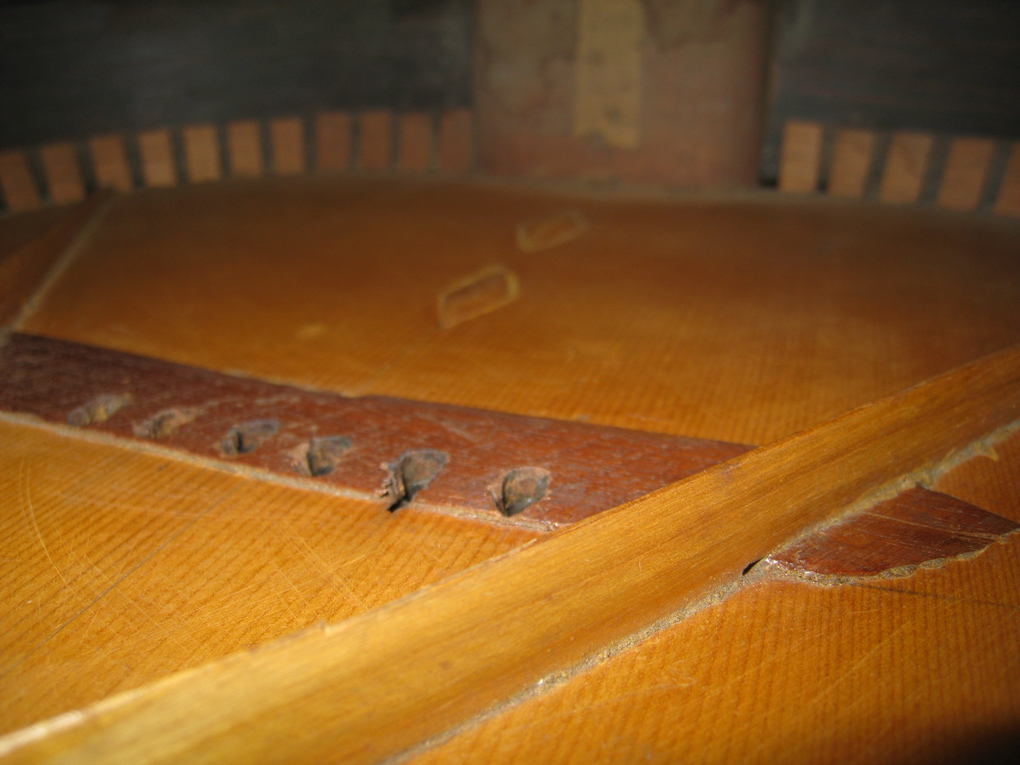
During this period of experimental X braced guitars, Martin started using trapezoidal mahogany bridge plates with ends tucked into the braces,
which continued to be used for several decades.
1840's Spanish Style Martin
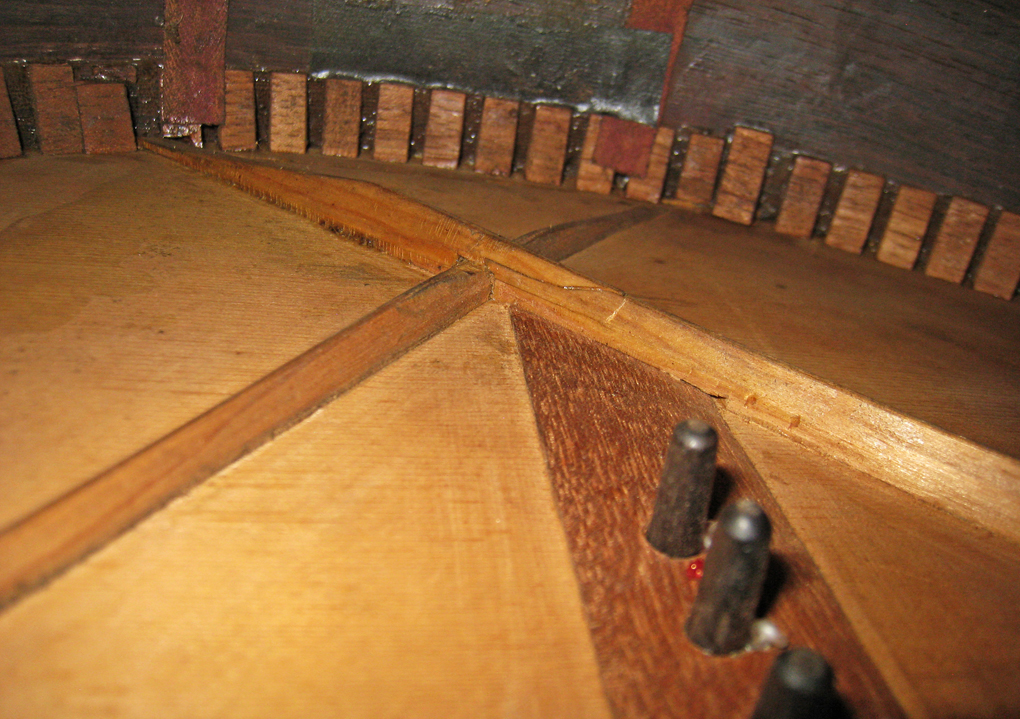
c. 1846 Spanish Style Martin Guitar
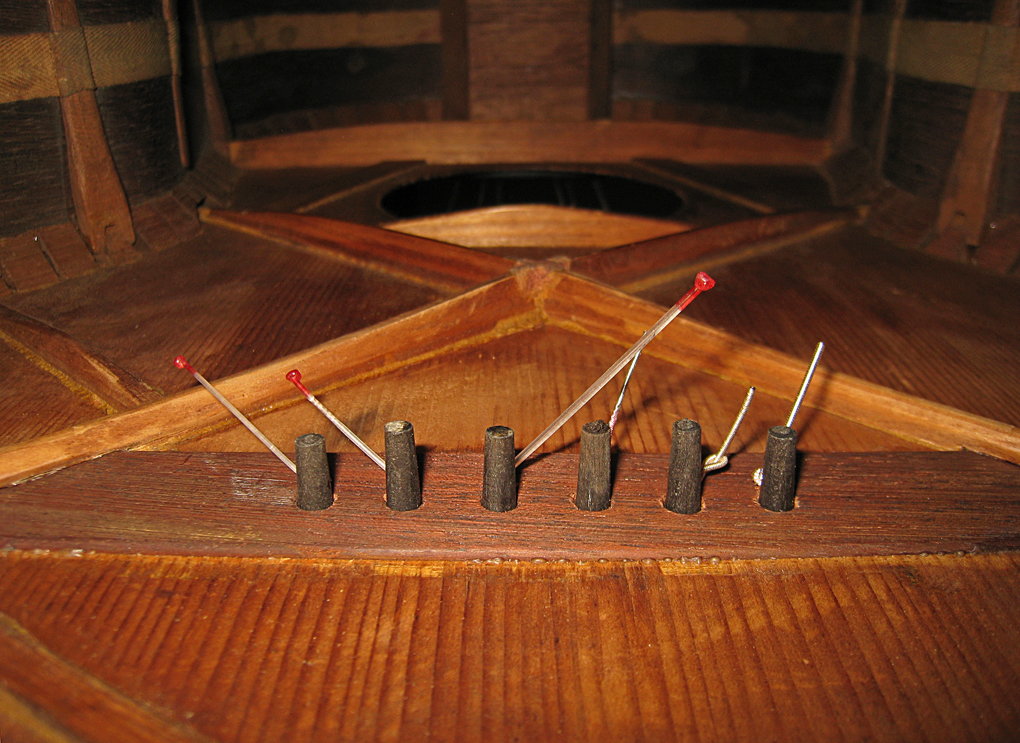
c. 1840's Martin "ZigZag" Style 28
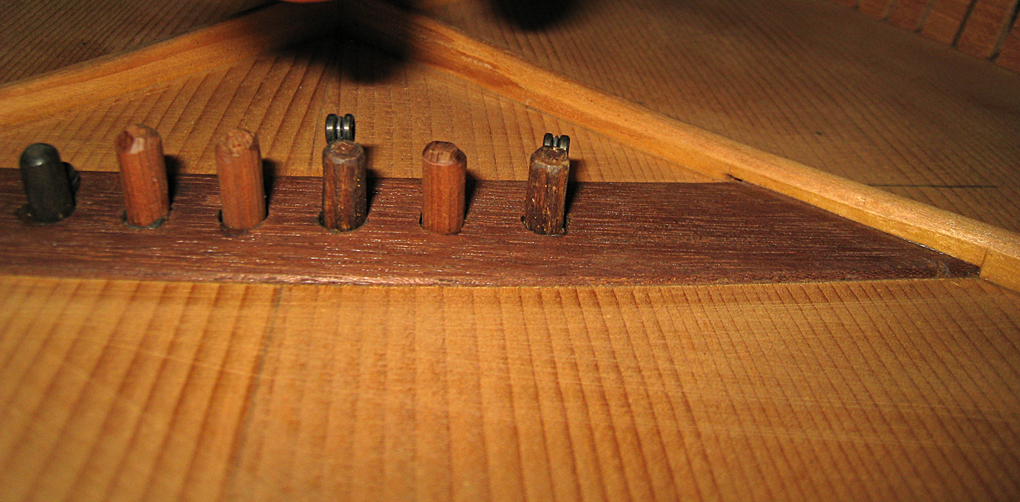
c. 1840's Martin "ZigZag" Style 21
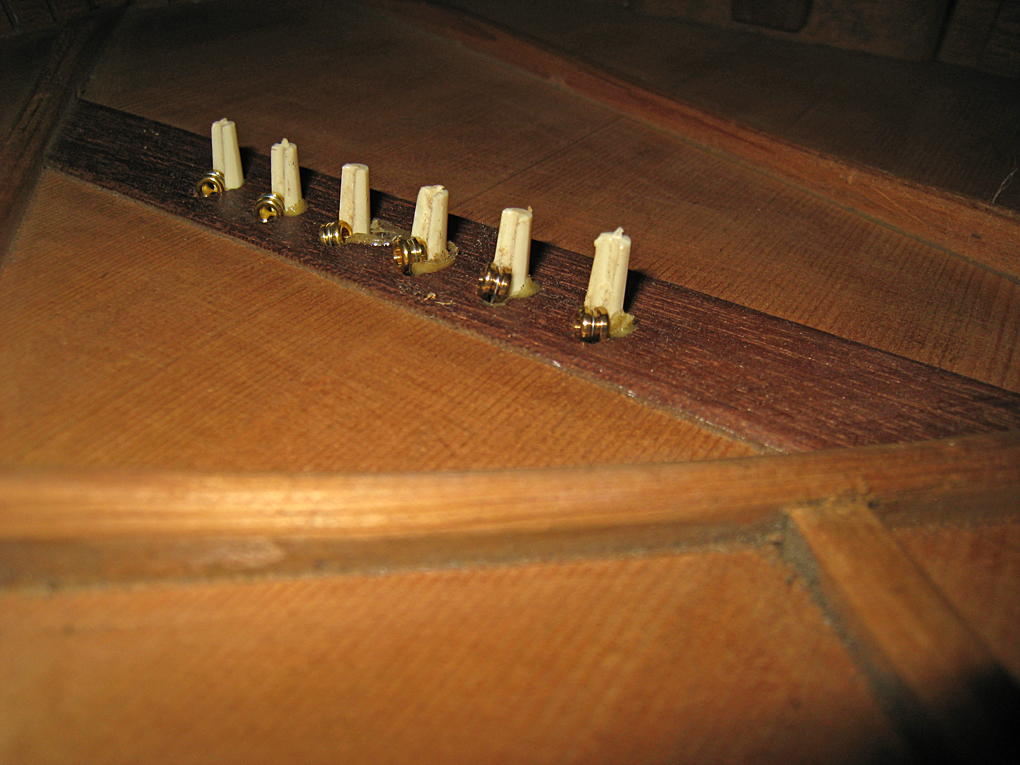
c. 1860's Martin Style 2-24
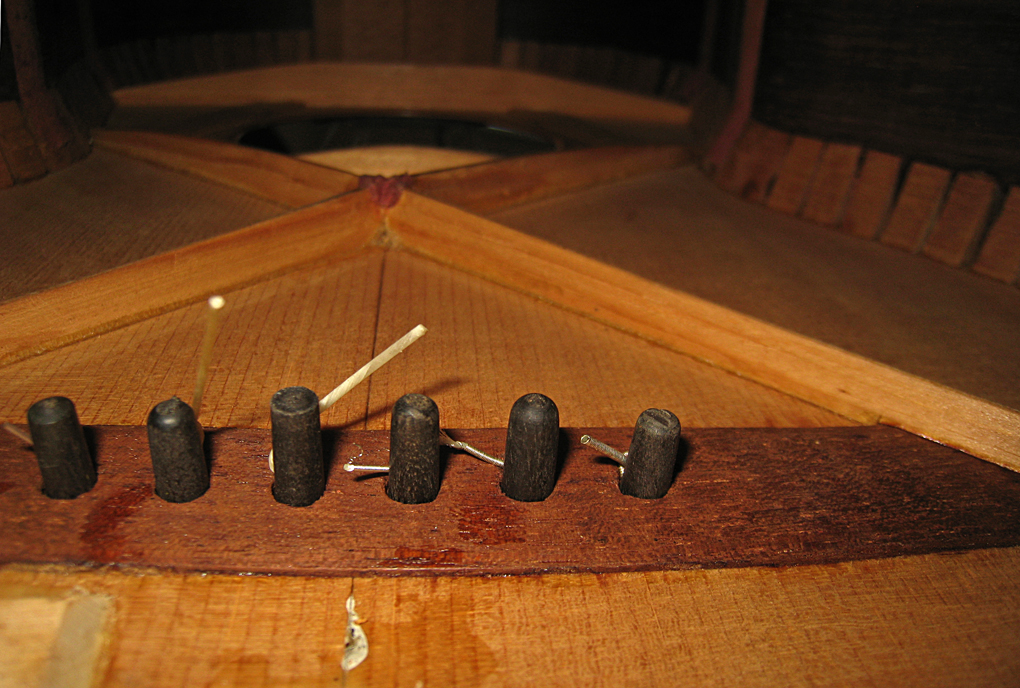
By the 1880's, most Martins were built with trapezoidal maple bridge plates again.
1886 Style 3-24
1894 Style 1-26
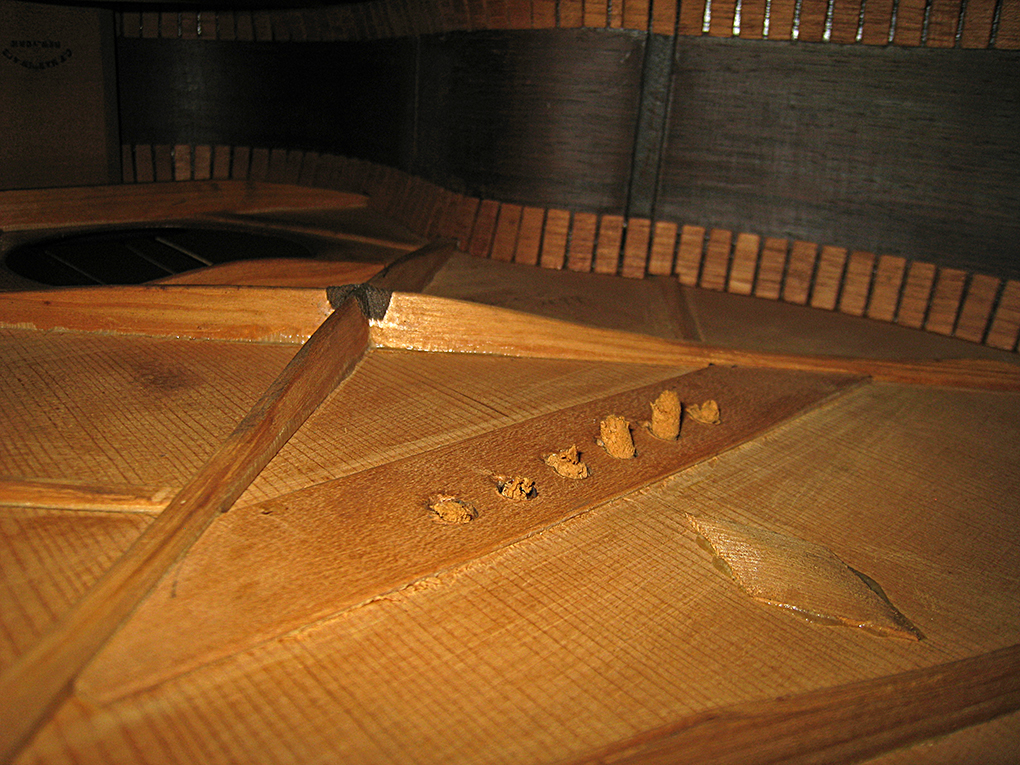
Martin 1905 0-42S
Martin 1914 Foden E
Martin 1919 0-45
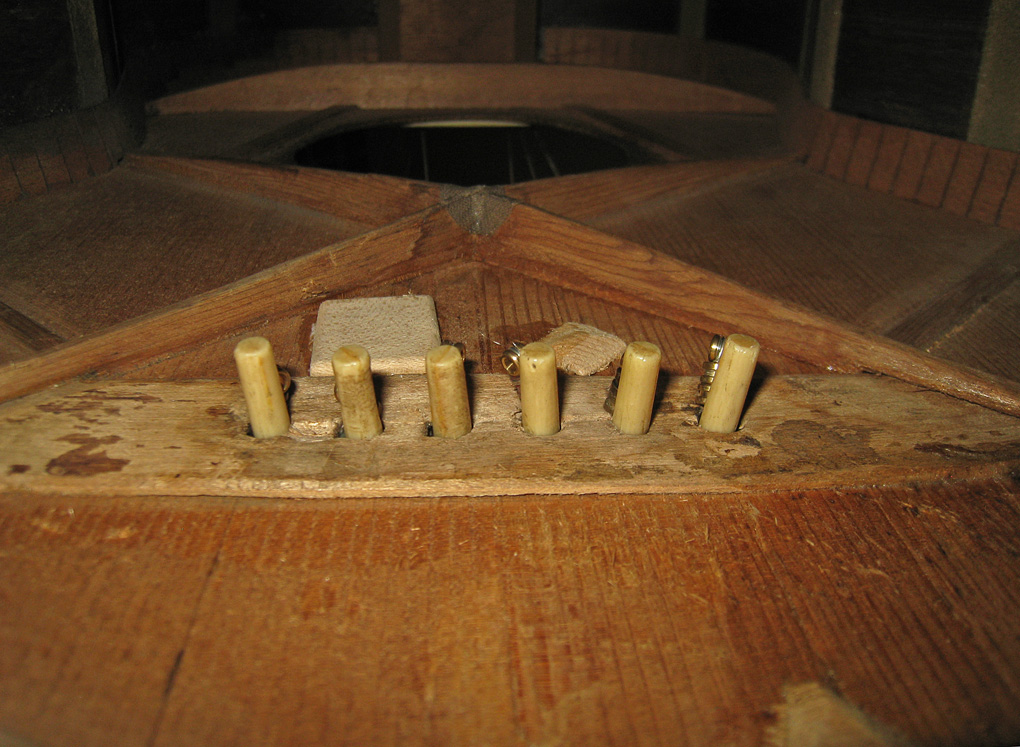
1919 Early X braced Hawaiian SoCal 1350
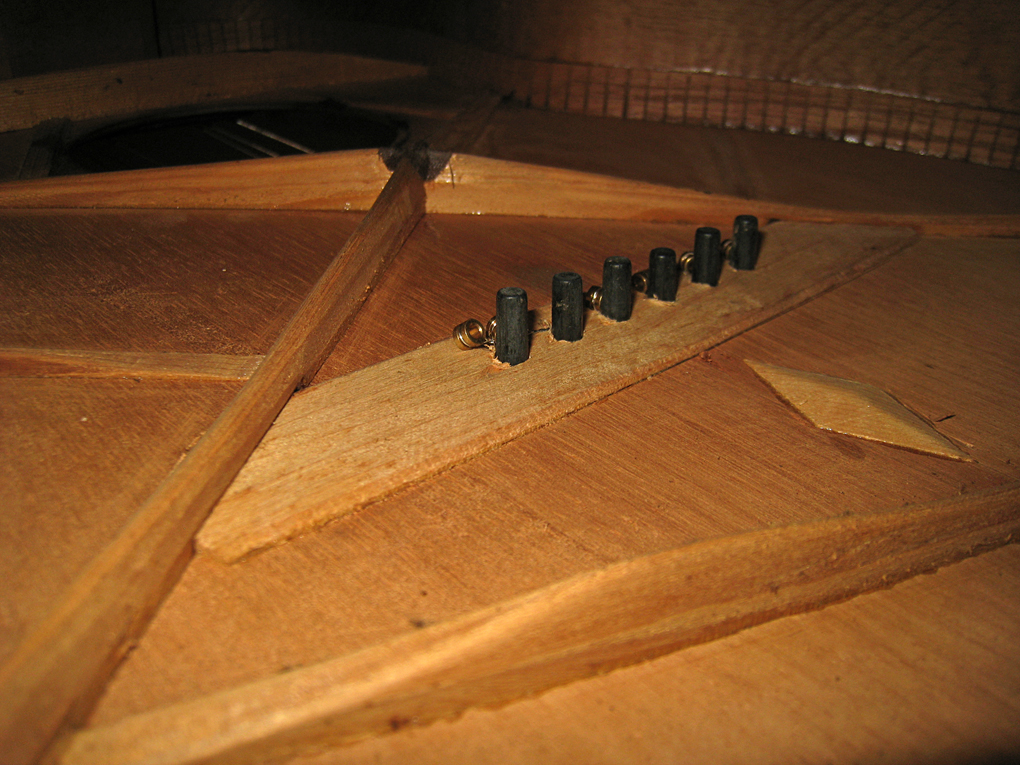
Martin 1922 2-17
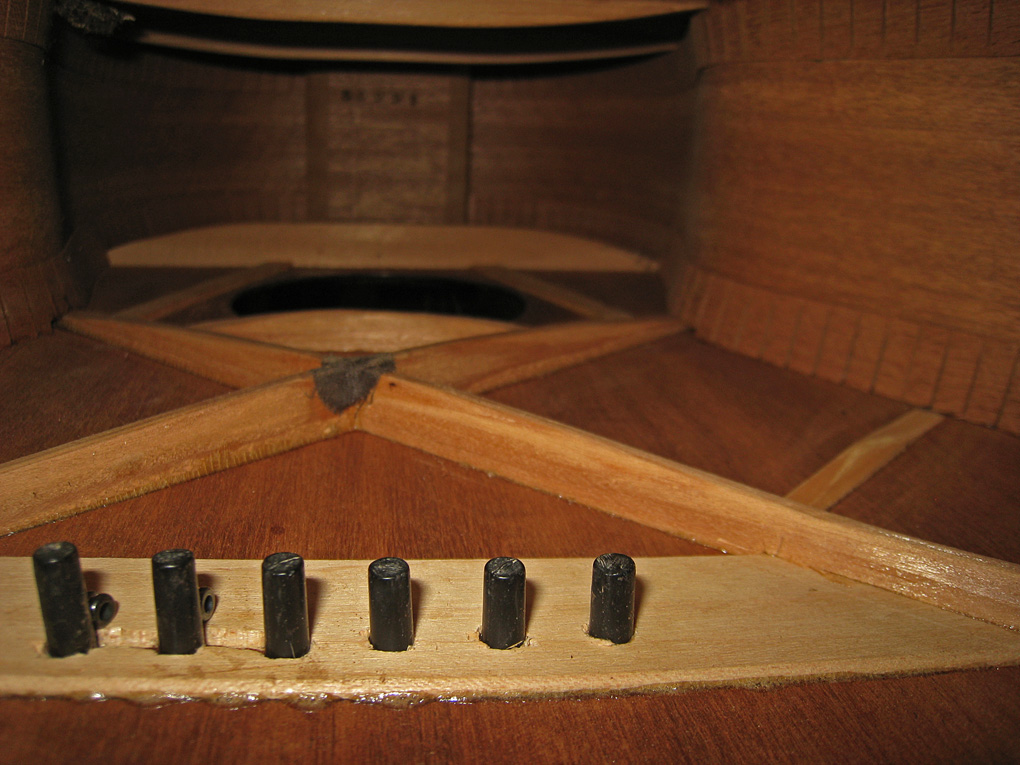
Martins in the early 20th Century had 1" wide trapezoidal bridge plates tucked into the braces.
1926 00-18
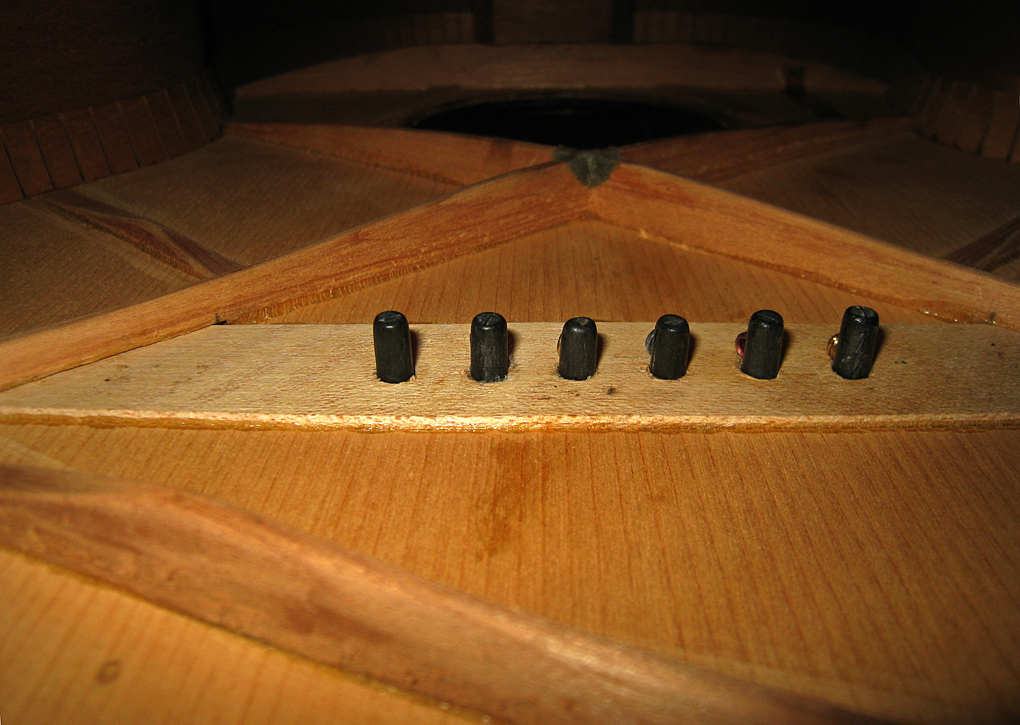
Martin guitars gradually became more robust from year to year to accommodate heavier strings.
Interestingly, while Martins began shipping with steel strings between 1922 and 1926, depending on the model, and began shipping most rosewood models with steel strings in 1926, no noticeable changes were made in 1926, and in 1927 Martin began building the bridge plates slightly thicker to accommodate the steel strings.
1927 000-18 with custom ordered left handed bracing.
1927 000-18 with standard bracing.
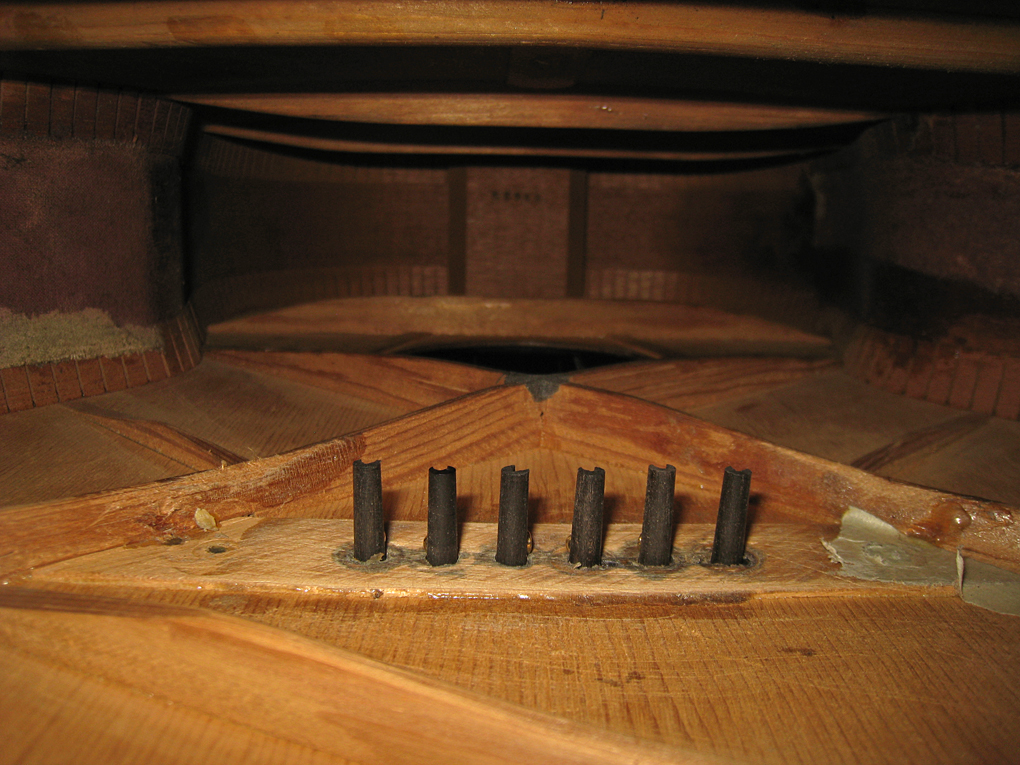
1928 00-21.
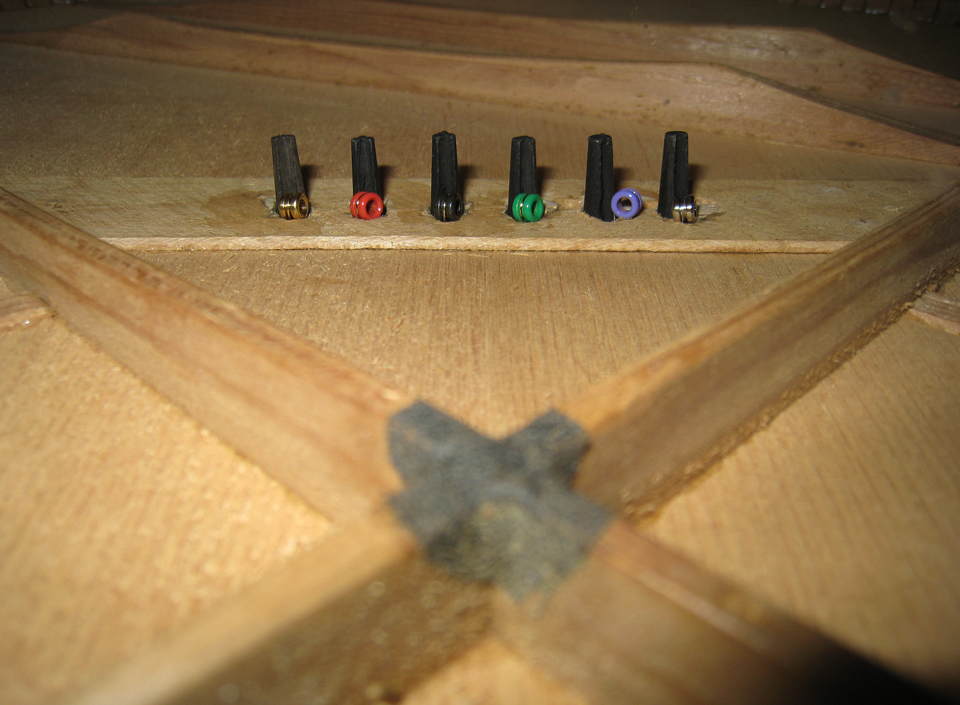
1928 0-21
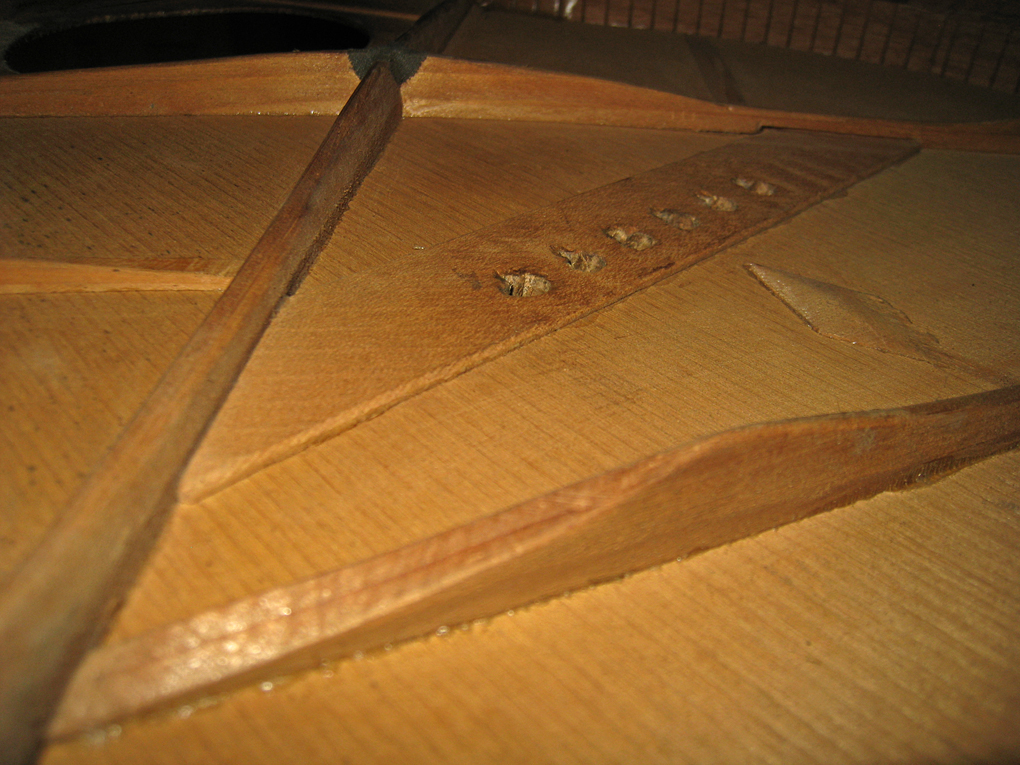
1929 Carl Fisher Special Tenor
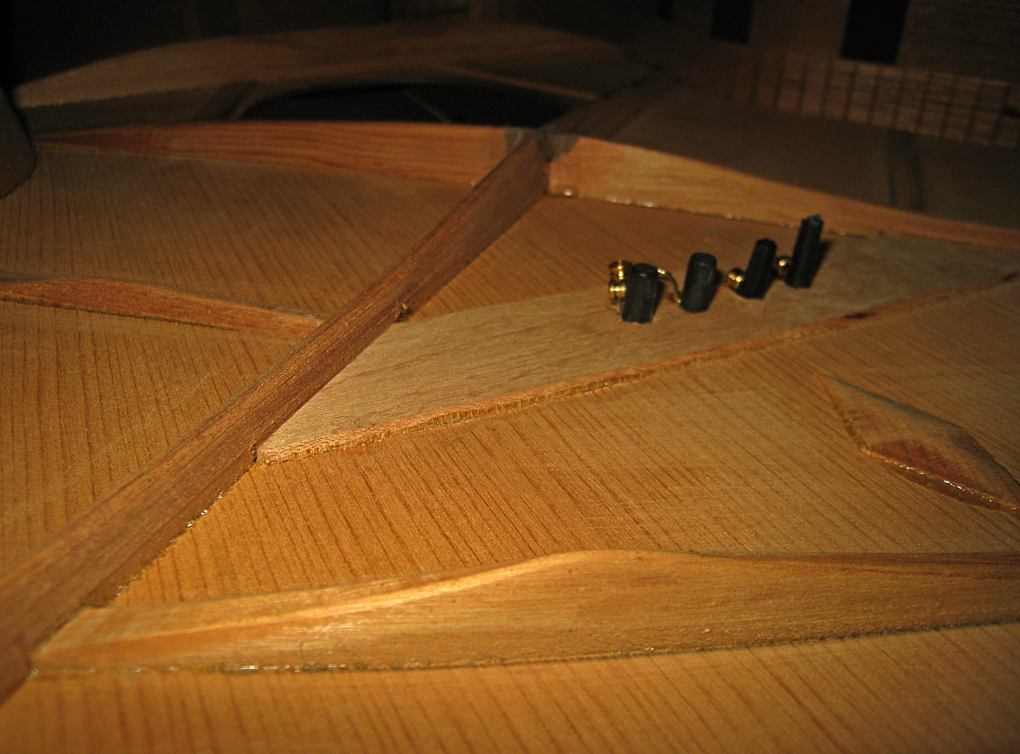
1930 OM-28
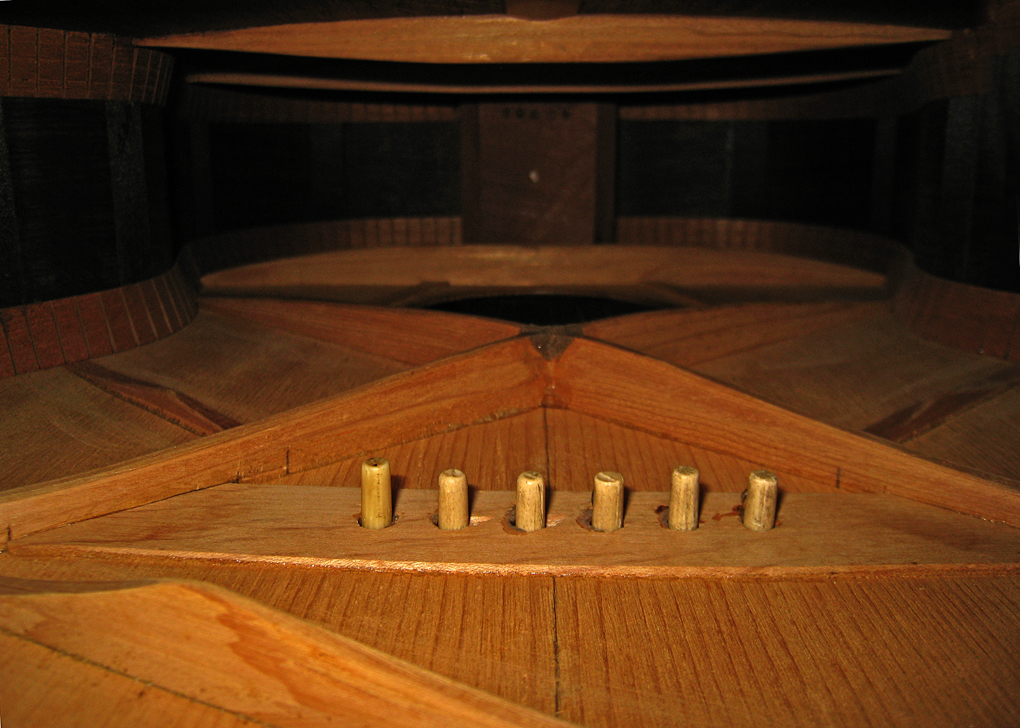
1930 OM-18
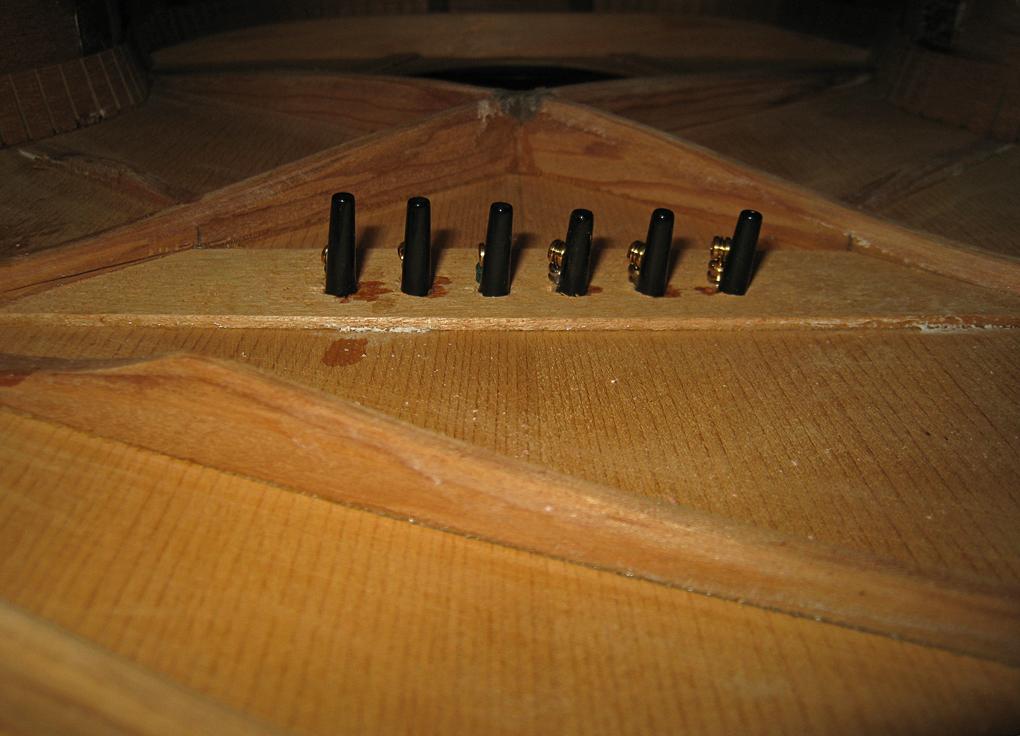
1930 OM-18P
1932 Martin 0-18
Serial Number 50820
Stamped "0-18 New"
April 25, 1932
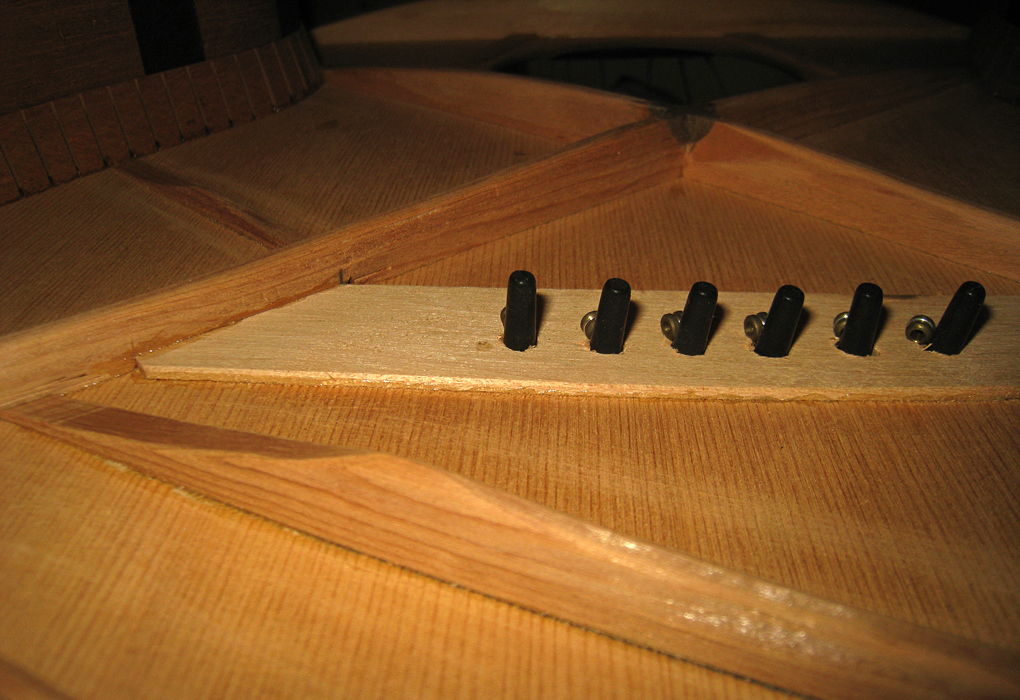
By early 1933, Martins had 1 3/8" hexagonal bridge plates tucked into the braces.
1933 0-17
Serial number 52755
Stamped February 7, 1933
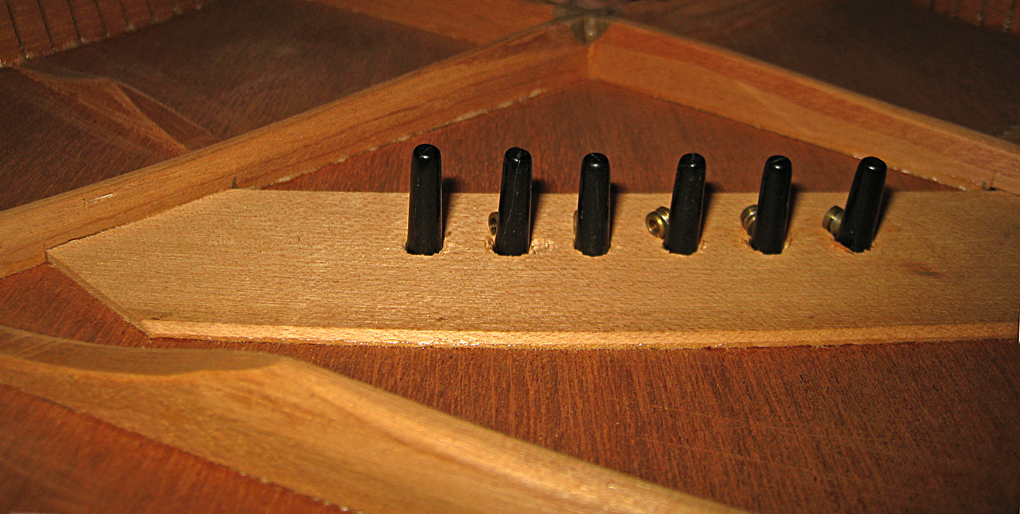
1933 OM-18
Serial Number 54864
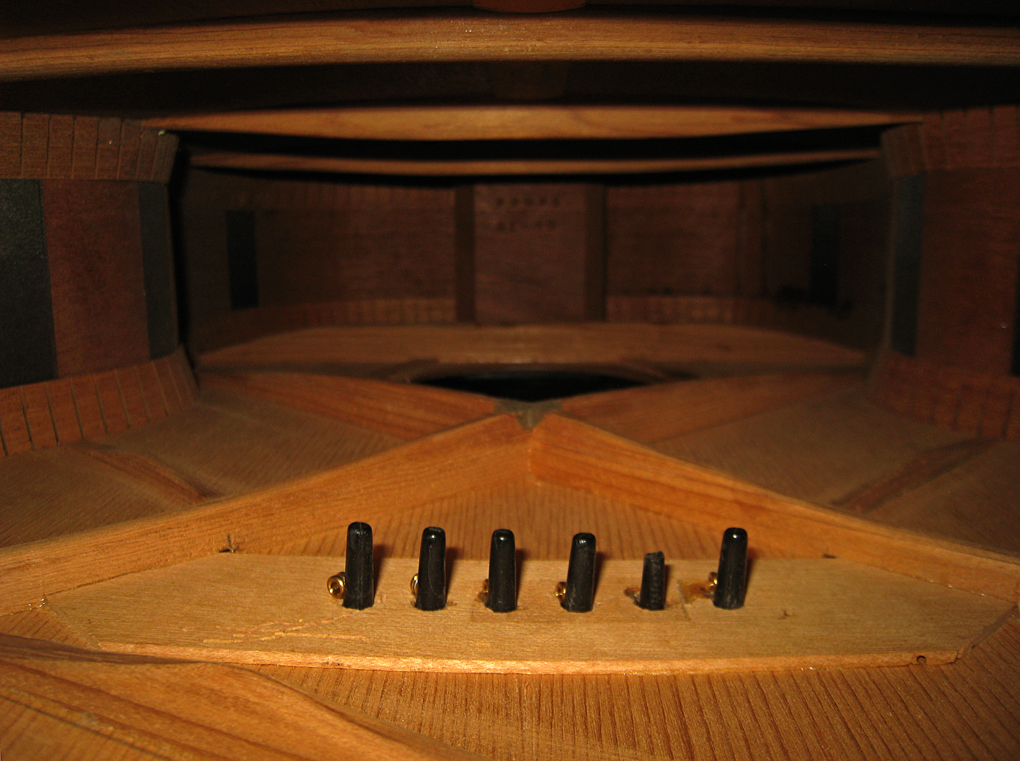
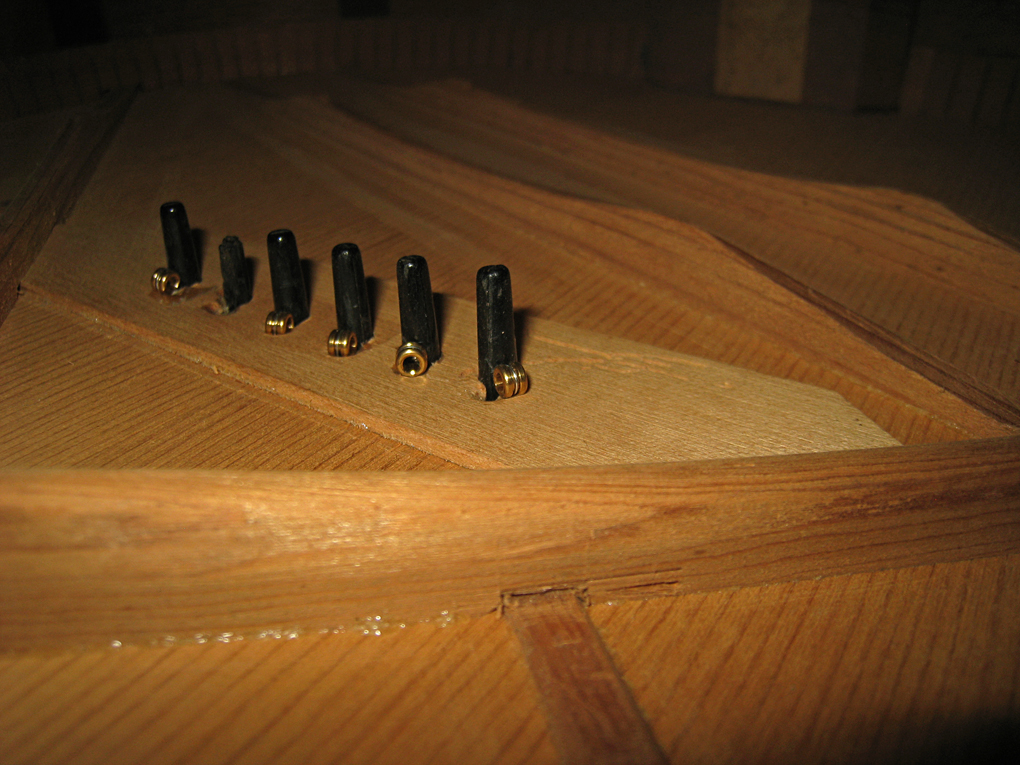
1933 R-18 Archtop
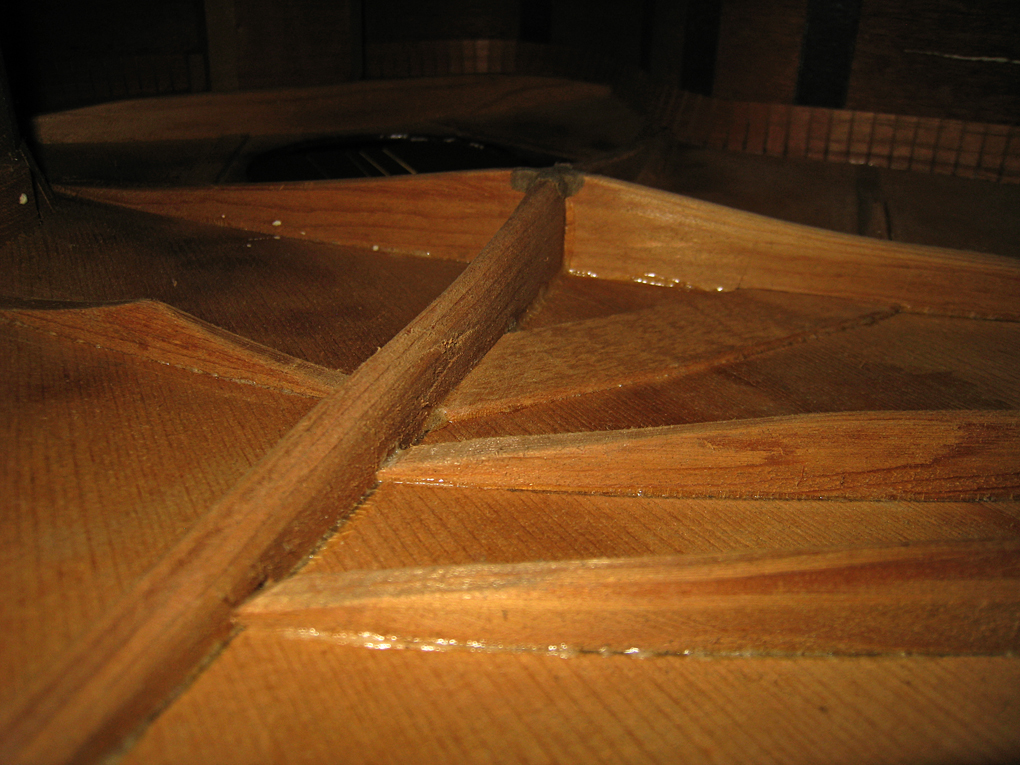
Martin 1936 0-17
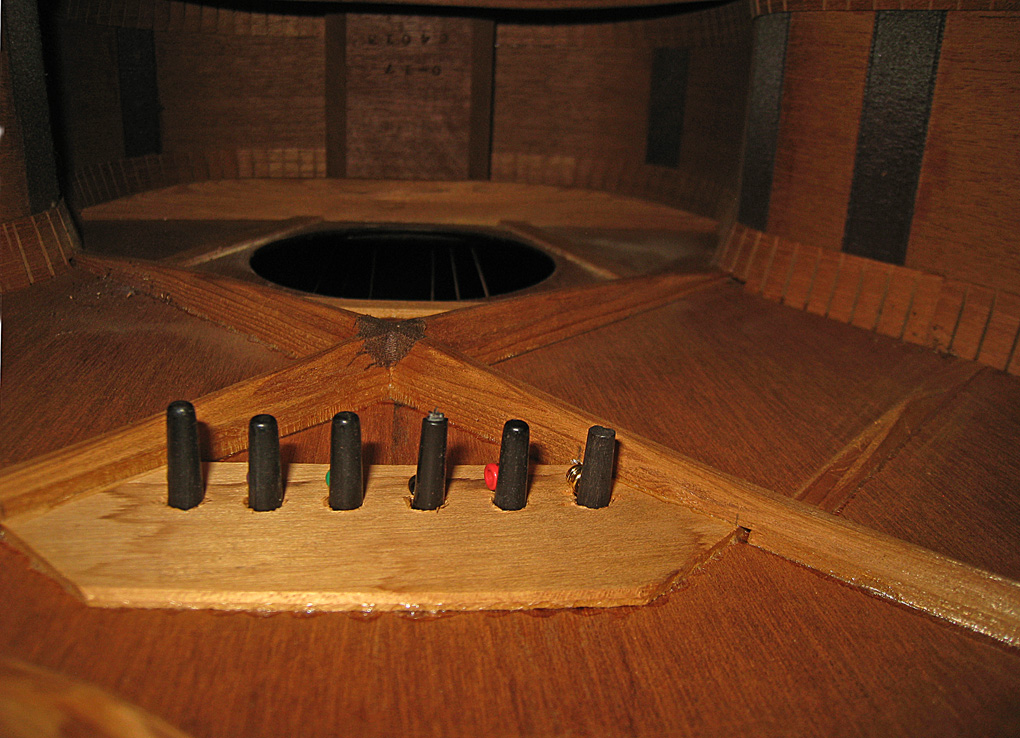
Hexagonal bridge plate tucked into the braces on a 1939 0-17.
Martin 1939 0-17
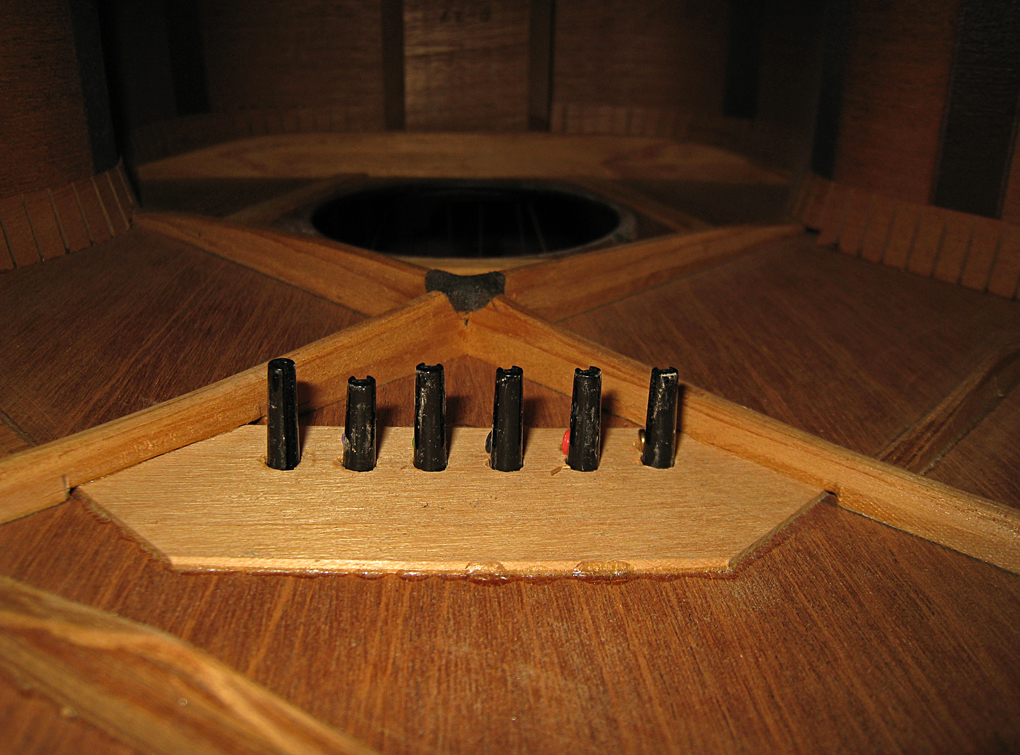
By 1940 or 1941, Martins once again had trapezoidal maple bridge plates, 1 3/8" wide, with ends cut to tuck into the braces.
The trapezoidal bridge plates are also noticeably thicker than the hexagonal plates that preceded them.
1941 0-15
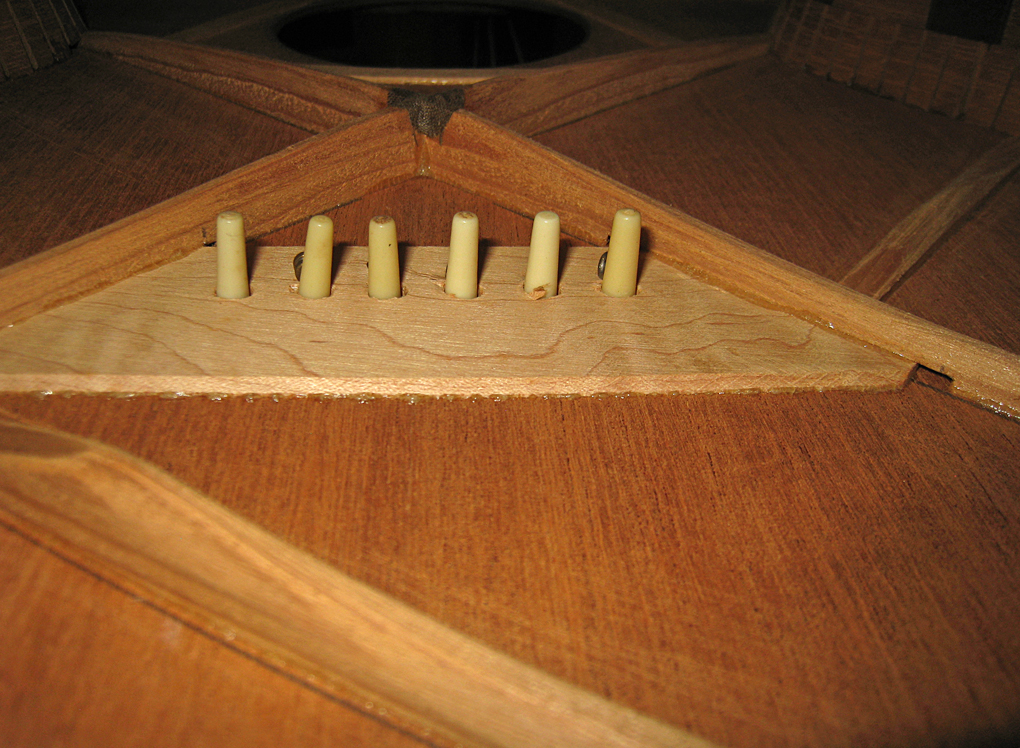
Martin 1944 D-18
1945 00-18
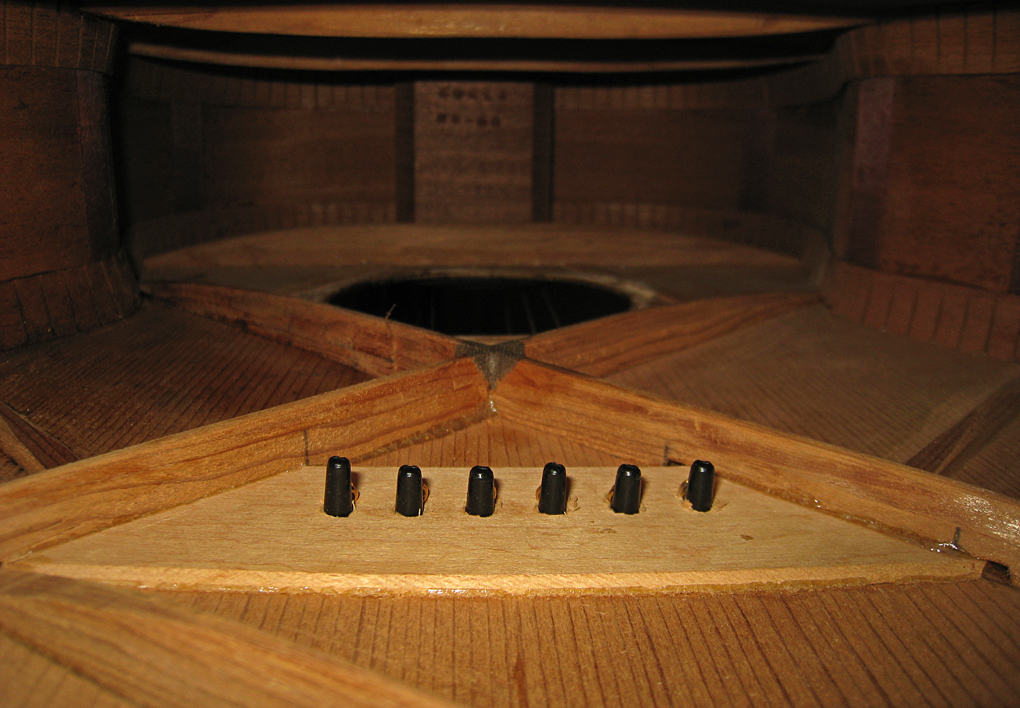
1945 D-18
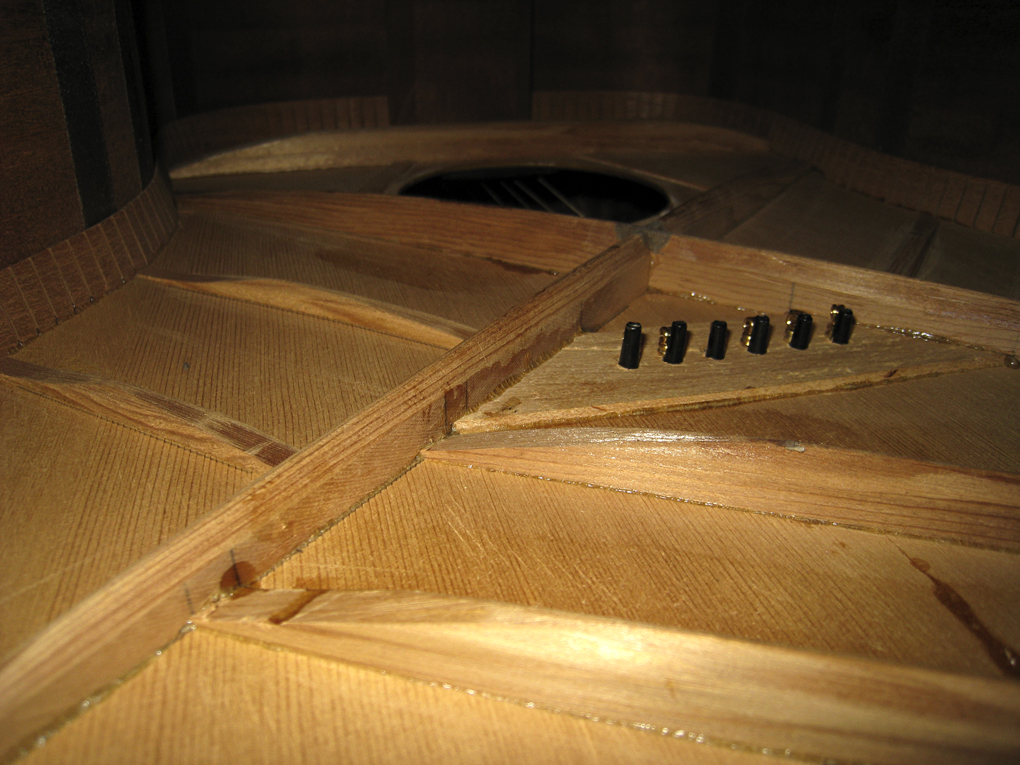
1946 000-18
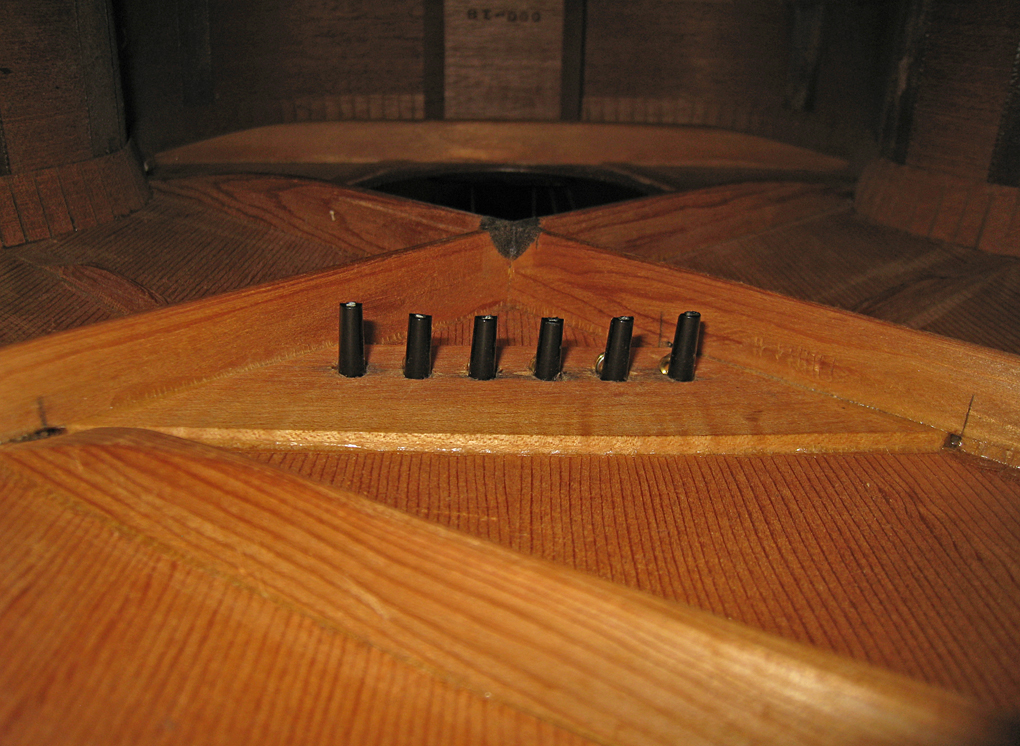
1952 000-18
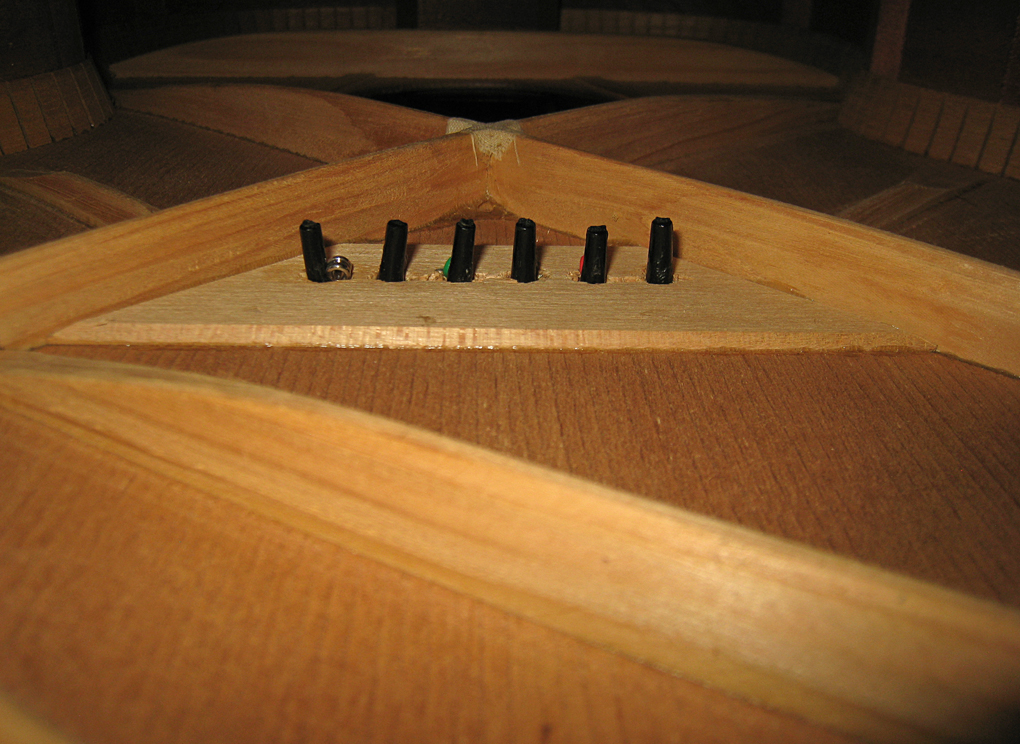
1957 00-18
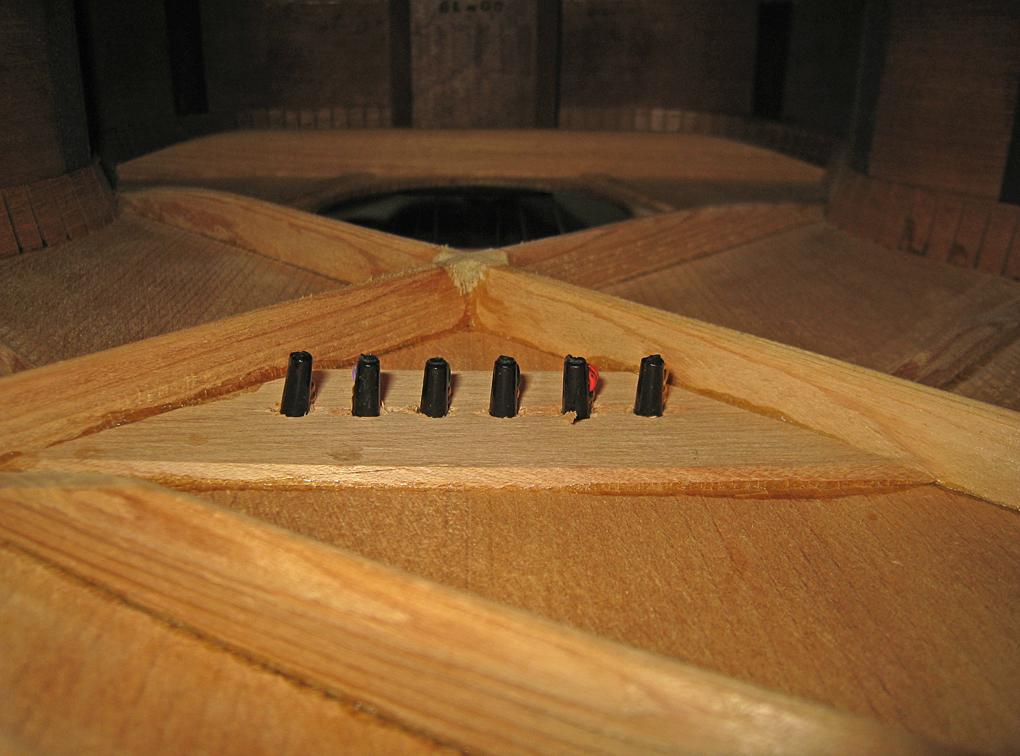
Bridge plate on 1917 SoCal 1400 with fan braces.
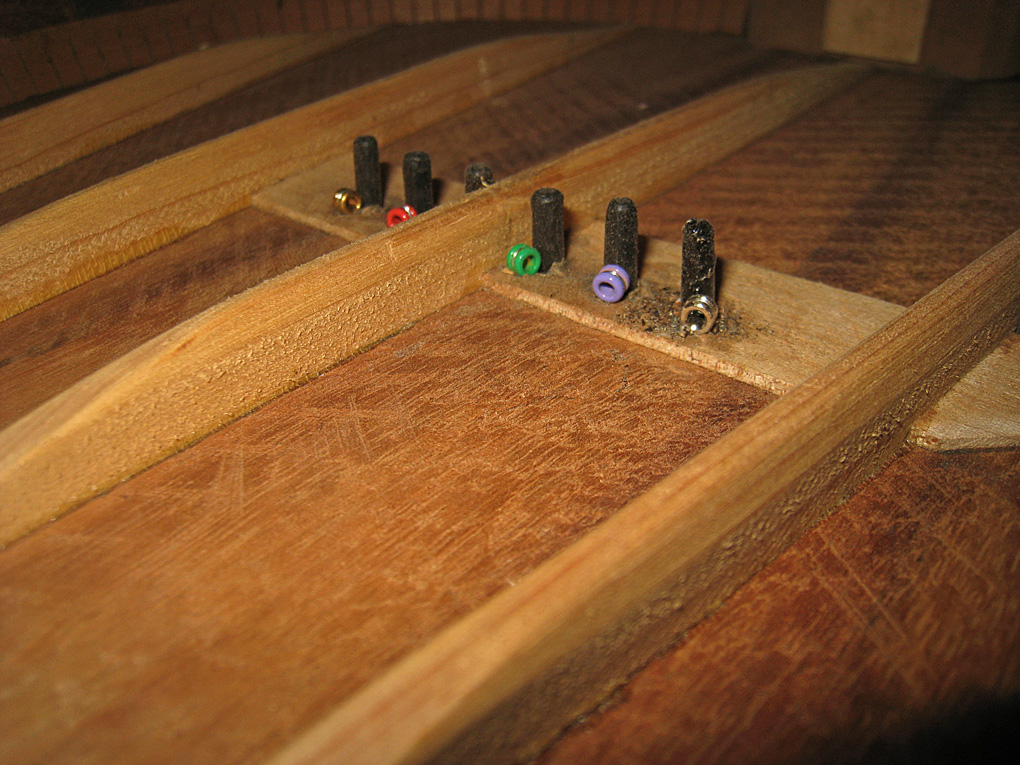
By 1933:
1"-wide trapezoidal to 1 3/8"-wide hexagonal bridgeplates
1940 or 1941:
1 3/8" wide hexagonal to 1 3/8"-wide trapezoidal bridgeplates
vintagemartin.com
To See Robert Corwin's Classic Photography of Folk and Roots Musicians, visit:
For Information on Photography for
Exhibition, Publication, CD's, Promotion, Web Pages, Tour Books,
to Purchase Photographic Prints, or
If You Have Questions or Suggestions About This Web Site or Vintage Martin Guitars:
e-mail: Robert Corwinentire site copyright ©1998 through 2011 Robert Corwin/Photo-Arts. All rights reserved.